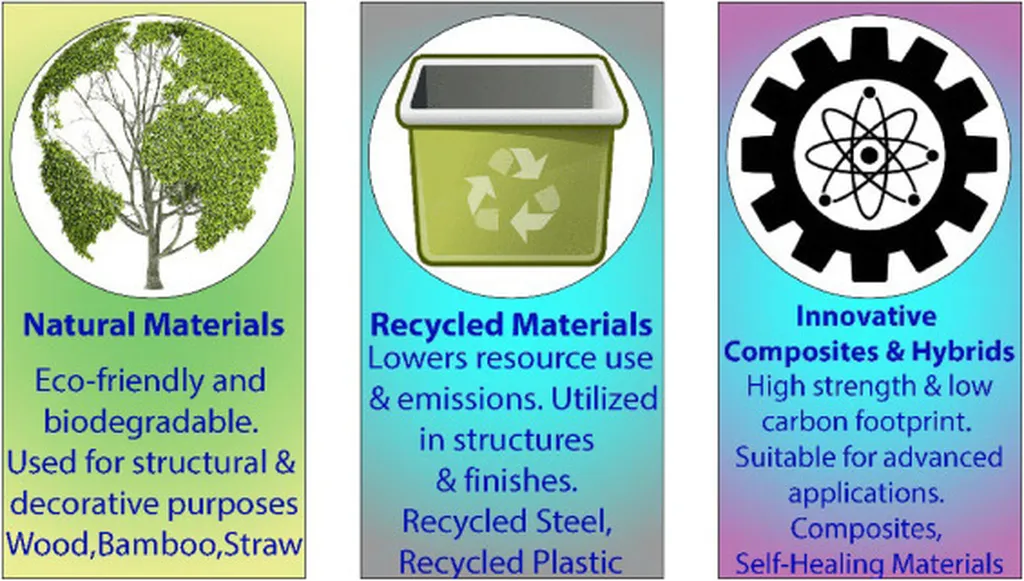In the quest for sustainable construction materials that don’t compromise on performance, a team of researchers led by Mudassir Mehmood from the State Key Laboratory of Safety and Health for Metal Mines has made a significant breakthrough. Their study, published in the journal ‘Scientific Reports’ (translated from Chinese as ‘Scientific Reports’), explores the development of an eco-friendly ultra-high strength engineered cementitious composite (UHS-ECC) that incorporates recycled concrete powder (RCP) and waste tire steel fiber (WTSF). This innovative approach not only reduces the environmental footprint of cementitious composites but also maintains superior mechanical properties, offering promising implications for the energy sector and construction industry at large.
The research addresses a critical need in the construction industry: the demand for high-performance, sustainable materials. Traditional cement production is a significant contributor to global carbon emissions, making the development of eco-friendly alternatives a priority. Mehmood and his team have demonstrated that by partially replacing cement with recycled concrete powder and reinforcing the composite with waste tire steel fiber, they can create a material that is both environmentally friendly and exceptionally strong.
The life cycle assessment (LCA) conducted as part of the study evaluated 18 major components, focusing on key impact categories such as climate change potential, fossil depletion, human toxicity, and particulate matter formation. The results were promising, showing significant reductions in environmental impacts. “We observed up to a 16% reduction in climate change potential and a 19% reduction in fossil resource depletion when substituting cement with recycled concrete powder,” Mehmood explained. This means that the new UHS-ECC could substantially lower the carbon footprint of construction projects, a critical factor for energy sector stakeholders aiming to meet sustainability goals.
The mechanical properties of the UHS-ECC were also impressive. The composite achieved a maximum compressive strength of 129 MPa at a 5% RCP replacement level, although higher substitution rates led to a gradual decline in strength. This finding suggests that there is an optimal balance between sustainability and performance, which can be fine-tuned for different applications.
The commercial implications of this research are substantial. The construction industry is increasingly under pressure to adopt sustainable practices, and the development of high-performance, eco-friendly materials like UHS-ECC could be a game-changer. For the energy sector, which often involves large-scale construction projects, the ability to use materials that reduce environmental impact while maintaining structural integrity is invaluable. This could lead to more sustainable infrastructure development, from renewable energy facilities to energy-efficient buildings.
Mehmood’s research highlights the potential of recycled and waste materials in creating high-strength composites. As the construction industry continues to evolve, the integration of such sustainable materials could become a standard practice, driven by both regulatory requirements and consumer demand for greener products. The findings also underscore the importance of life cycle assessments in evaluating the environmental impact of new materials, ensuring that sustainability is not just a buzzword but a measurable outcome.
In the broader context, this research could shape future developments in the field of construction materials. The successful incorporation of recycled and waste materials into high-performance composites opens up new avenues for innovation. It challenges the industry to think creatively about how to repurpose waste products and reduce reliance on traditional, resource-intensive materials. As Mehmood and his team continue to refine their approach, the potential for even greater reductions in environmental impact and improvements in material performance is exciting.
The study published in ‘Scientific Reports’ serves as a testament to the power of interdisciplinary research and the potential for sustainable innovation in the construction industry. By leveraging the expertise of the State Key Laboratory of Safety and Health for Metal Mines, Mehmood and his colleagues have made a significant contribution to the field, offering a blueprint for how high-performance, eco-friendly materials can be developed and integrated into commercial applications. As the industry moves towards a more sustainable future, the insights gained from this research will undoubtedly play a crucial role in shaping the next generation of construction materials.

